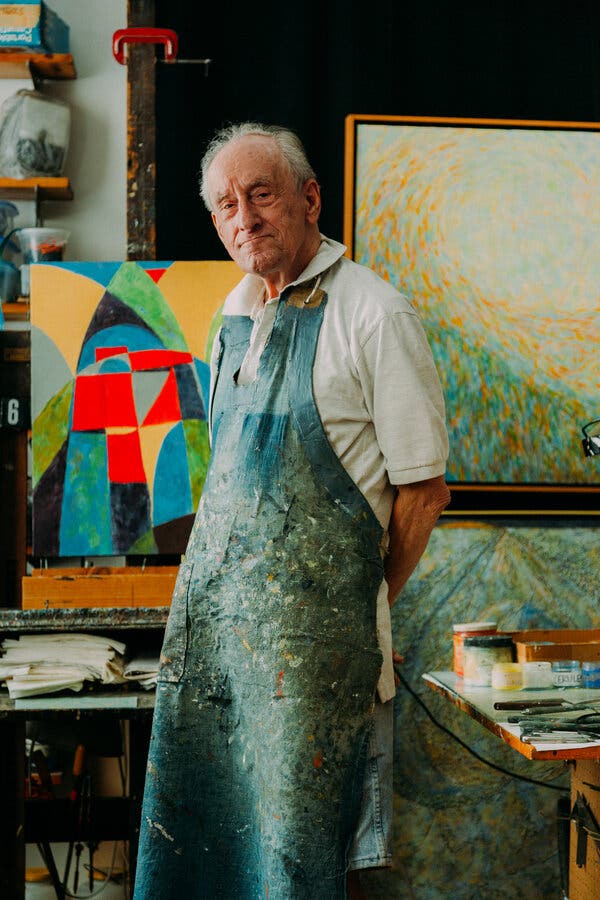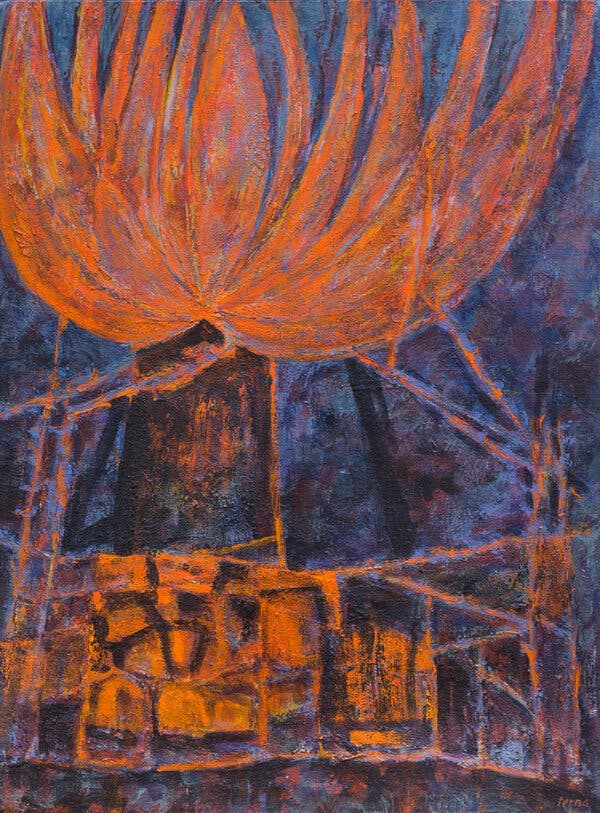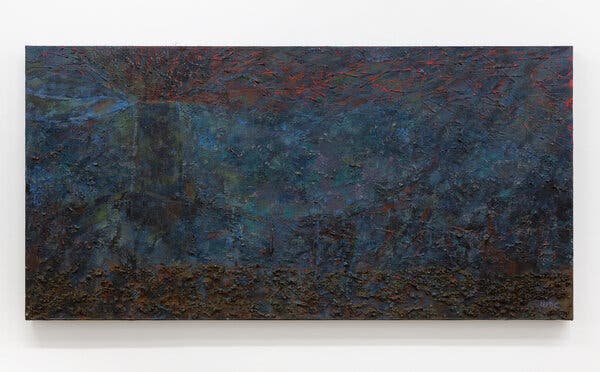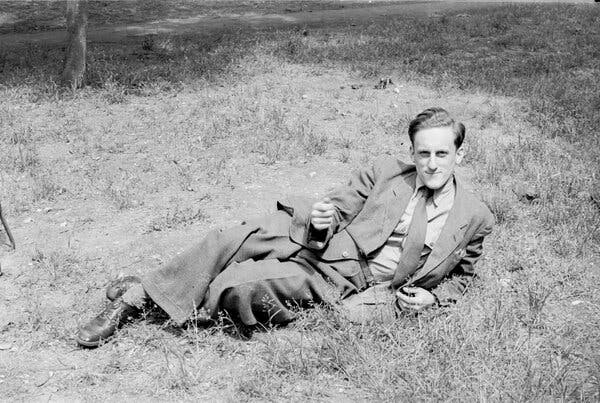Appendix 2. Manifesto of the Burmese Democracy Movement: Task Force for an Inclusive Political Process by 2010
Also called—
NCGUB (national Coalition government of the Union of Burma) —
A Plan for democracy and development (final title)
Alternative title: NCGUB—
Our Vision and our plan.
Images from the Internet, mostly Wikipedia, public domain. In sequence,
hot air balloon over ancient city of Bagan.
Captured Mon King Manuha and Queen, 10th century, Bagan.
Capture of a wild elephant, Burma, c. 2014.
White elephant in Naypyidaw or Naypyitaw (NPT) “The Kings’ Royal City” built from scratch in 2005 in the paddy fields, somewhat like Brasilia. In that fake city, they then built a fake parliament for a fake democracy.
Aung San Suu Kyi, a collage made partly of Burmese inflated currency by Zwe Yan Naing, c. 2014.
Apparently based on a famous photograph of Aung San Suu Kyi by Nic Dunlop.
Draft 3-17-09
Burma faces three major ongoing crises: A Political and/or a Constitutional Crisis, a Socio-Economic Crisis, and a Humanitarian Crisis.
Political developments inside Burma, including the handing down of harsh prison sentences to monks, democracy activists, and politicians as well as the continuing rejection of international demands for political reform, indicate that the Burmese generals will not be retreating from their scheme to legitimize military rule in Burma unless they face concerted action from the democracy forces at home and abroad as well as from the international community.
The Burmese generals' headstrong push to hold elections under a constitution unilaterally written without the participation of major democratic and ethnic political parties will entrench dictatorial rule by the incumbent corrupt military regime for generations.
This process needs to be stopped.
The National League for Democracy and the pro-democracy forces would like to see the return of Democracy to Burma as soon as possible.
2. A Transitional Package for the Emergence of an Inclusive Political Process in Burma by 2010.
The leadership of the democracy movement inside the country believes that the National Coalition Government of the Union of Burma and the democracy movement outside the country should take a lead in creating more political space inside and strive to bring change to the country with the support of the international community.
Given this new responsibility, organizations in the democracy and ethnic movements in exile will work even more closely under common work programs and pursue common objectives. Their tasks in the next months especially before 2010 will be enormous, making preparations to improve the capacity of the movement in exile as well as inside the country, providing training programs to leaders and grassroots personnel, unifying visions of different components of the movement, projecting common objectives, and framing a working plan.
3. A Strategic Action Plan being prepared with the help of exile politicians, legal scholars, economists, a human geographer and a civil-military relations and other Burma experts and will include:
A Constitutional Framework
Electoral Law and System
A Transitional Economic Plan
A Security Review
National Reconciliation
Return of Refugees and Displaced Persons in a New Administration, when
Conditions are Normalized.
4. In Burma, the polity and the economy are closely linked to form a political economy that is highly dysfunctional.
Between the first coup by the Revolutionary Council in 1962 and the beginning of the clampdown on the mass pro-democracy movement on September 18, 1988, when SLORC (State Law and Order Restoration Council) was formed, Burma had a socialist economic system with a one-party military government. The Burma Socialist Program Party laid down much of the economic system that was in place in 1988 when SLORC initiated an "open economy."
Since 1988, a bizarre and even more distorted economy has appeared, with the state playing a major role and its expenditures financed by the highly destructive expedient of printing more money, as well as selling off the country’s natural resources. The inflation rate is currently 50% per annum, the highest in S.E.Asia.
The Constitutional Framework -- Underlying Principles & Basic Conditions
5. Introduction
The issue of constitutional settlement lies at the heart of Burma’s national reconciliation.
Burma has amassed significant “constitution capital”, despite being without a constitution for nearly thirty four years since Independence and over sixty years of civil wars and conflict. Despite this, constitutional advance eludes us.
This cannot be secured without addressing the fault lines through talks, and constitutional conversations or constitutional review.
The two fault lines (areas of contention where dialog is likely to fall apart) are:
Federalism, endorsed by the NLD, the Ethnic Nationalities and large numbers of pro-democracy parties and
The role of the military in national politics.
In general, the pro-democracy groups including the Ethnic Nationalities want a decentralized federal union, civilian government and a parliamentary system with a president, in some cases with particular reference to Ethnic and States Rights.
Key Stakeholders
NLD, UNLD, SNLD, EN Ceasefire Groups, KIO, UNA, NCGUB, NCUB, DAB, ENC, KNPP, SSA etc.
SPDC, UWSA etc.
The SPDC (State Peace and Development Council, successor of SLORC) wants a unitary, centralized administrative state, a (military) president and a leading role for the military in parliament, the government at all levels and in the presidency and a parliament comprised of two houses at central level, but to sit jointly for a number of key state law-making powers, similar to the People's Assembly of the Peoples Republic of China.
The SPDC drafted a national constitution that reflects the type of state they desire. They plan to implement this constitution after the 2010 "elections" which they also plan to hold.
Our task is to provide a scenario whereby constitutional advance might be made, given the tight constitutional constraints circumscribed by the SPDC's draft state constitution, its seven step road map to a disciplined democracy , its tight hold on the levers of state and economic power, the incarceration of key political leaders, and the draconian laws that curtail basic freedoms, and a modus operandi of command and control and political paranoia on a grand scale.
The SPDC Constitution—unresolved issues.
The SPDC’s constitutional framework, contained in its seven-step roadmap, adds to neither the capital nor the advance of a constitution.
The SPDC’s constitutional framework does not seek to resolve competing ideas on nationhood, identity, language, political and economic systems and which moral values should be promoted or disavowed.
The SPDC’s constitutional framework does not seek to resolve the constitutional fault line running through the political heart of Burma, marked by secession, federalism, and the Tatmadaw’s constitutional role in national political life.
Secession is now dead - a major constitutional advance on the part of all the Ethnic Nationalities, but federalism-desired by democratic groups and Ethnic Nationalities, seen as the best approach to a multi-ethnic-diverse nation, and detested by the Tatmadaw leaders seen as the disintegration of the nation, remains unresolved.
The SPDC say that the National Convention’s constitutional principles, that mandated Rangoon as the capital, cannot be changed, but did so without comment, when they changed the country’s capital from Rangoon to Naypyidaw.
The draft constitution says that it will apply as soon as approved through a referendum and the SPDC agreed with NC delegates to postpone its implementation until after the 2010 election.
The SPDC’s constitutional framework, incorporating the Pyithu Hluttaw Election Law (14/89), Declaration 1/1990, National Convention Orders, Working procedures, & Rules, Order 5/96, Seven-Step Roadmap to Disciplined Democracy, the 54 Member Technical Drafting Committee, 2008 referendum, and the planned 2010 elections fails the legitimacy tests of rightful architects, rightful process and rightful design. This leaves the SPDC’s planned 2010 elections in “legitimacy limbo”. Credibility however, can come through constitutional review.
Calls for Constitutional Review
The clarion call by all parties, except the SPDC, is and remains constitutional review. For a transition to take place that has some chance of sticking, constitutional review is essential. It can be best approached by recalling the constitutional capital that has been amassed, scope out where the country wants to be now and in 10 to 50 years. For example, it would be good to be peaceful and prosperous and as General Than Shwe says, when referring to the constitutional referendum and the 2010 elections, for Myanmar to hold its head high in global society.
In seeking constitutional review it is essential to promote just that to enable a transition. It can include a constitutional implementing team, necessary to implement the country’s constitution, to include sunset and sunrise clauses and the mechanisms of machinery of state, that will be needed in a new state structure.
This requires an electoral law system to be established that will include amendments to the political parties’ laws, or new ones. (See also the section on Electoral Laws).
All major groups directly involved continue to call for any transition process to be inclusive, i.e. to have talks and for constitutional review. (See attached comments)
All major groups denounce secession. (See their respective draft constitutions)
All major groups, except the Tatmadaw, desire a constitutional framework that incorporates a form of Federalism.
It is important to understand and recognize the “legal” genesis of the SPDC’s National Convention (NC) found in Declaration 1/1990. It is critical for three reasons:
(i) All parties agreed to work with it, albeit reluctantly, including the NLD.
(ii) It repeats the Pyithu Hluttaw Election Law (14/89) at Chapter 2, Section 3 stating: “The Pyithu Hluttaw shall be formed with the Hluttaw representatives who have been elected according to this law from the constituencies.”
(iii) Declaration 1/1990 further states at Section 20 that those elected in the 1990 elections have the mandate to prepare the country’s constitution, “Consequently under the present circumstances, the representatives elected by the people are those who have the responsibility to draw up the constitution of the future Democratic State.” (NC started with approximately 15 per cent of MPs, and finished with approximately 1 per cent of MPs) It further sets some limiting conditions, but these representative fundamentals remain unaltered
(iv) NLD have said they want to convene the Parliament to have constitutional review. Refer to Declaration 1/1990 and at least have regard to it, to launch talks re. constitutional review
8. What the draft SPDC constitution does and does not do.
It does contain a few good points, the common law writs and such, but these are overwhelmed by its comprehensive fatal flaws.
It does –
These provide amnesty for any crimes committed for the current government/Tatmadaw leaders
gives the Tatmadaw a leading role in parliament, the executive and the presidency
mandates a presidential system of government
creates three parliamentary chambers at national level: The Pyidaungsu Hluttaw (national parliament), the Pyithu Hluttaw (people’s lower house) and the Amoytha Hluttaw (Ethnic Nationalities upper house) but it gives the Pyidaungsu Hluttaw its own constitutional competence and legislative standing-similar to a Peoples Republic of China People’s Assembly, as well as competence to deal with deadlocked bills and so on, and it also sits as the electoral college to elect the President
provides for a maximum of one session per year for the parliament
establishes a constitutional tribunal that has the power to give opinions before the fact and review of parliamentary legislation, as of right.
shapes the state through the narrow prism of the SPDC’s state ideal as being led by the Tatmadaw
mandates a national culture
imports the three national causes into every area of life, including political parties
maintains sovereignty of the rulers
incorporates the Tatmadaw command and control modus operandi into the state structure
further entrenches the centralization of the executive to the capital (Rangoon) as well.
limits the functions and power of the Ethnic Nationalities in legislative bodies to a few Ethnic Nationalities specific areas
charts a transition from a Tatmadaw administration to a civilian administration. However there is a constitutional caveat on this, also implied in point seven of the seven-step roadmap
Most importantly, the SPDC Constitution does not --
include popular sovereignty
include the people’s aspirations, made clear in 1990 and in the National Convention and other fora
resolve the fundamental national political problem manifested in Federalism, and Ethnic Nationalities needs
allow political freedoms
seek to resolve the Ethnic Nationalities needs
seek to reconcile differences and or embrace diversity
recognize the state as being one of multi-ethnicity and political diversity
give amnesty for political actors other than the SPDC/Tatmadaw
provide for state and region constitutions
And these are, in the words of our constitutional expert, truly fatal flaws.
A true Constitution must guarantee the following Bill of Rights
9. Human Rights
Guarantee Human Rights
Strict guarantees of human rights and respect for human dignity. A Human Rights Committee should be established. It should be responsible to the highest legislative body to prevent government from abusing power and violating citizens’ rights. A democratic Burma with its Constitution must guarantee everyone’s personal freedom.
Release all prisoners of conscience and political prisoners. All of these individuals and their family members have been treated as criminals because of their thoughts, speeches, writings etc. The state should grant Reparations. A Truth Investigative Commission could have a mandate to find facts about injustices and atrocities and determine responsibility for them, uphold justice and seek social reconciliation.
Freedom of Expression, Freedom to Assemble, Freedom to Form Groups and Freedom of Religion and Language and the Right to Own Property and Freedom from Arbitrary Confiscation, Land or Cultivators' Rights etc.. are crucial.
Note added by KMK: Laws have been enacted against the Rohingya, a subset of Burmese Muslims, because basically the junta wants their land (Arakan Coast) for an oil and gas pipeline called the Shwe Pipeline, to Yunnan in China.
10-19-2016
https://en.wikipedia.org/wiki/Sino-Myanmar_pipelines
Accessed 10-26-2016
10. Political/negotiation process: Principle demands
During the build-up to the 2010 election there must be an inclusive political process. Only then can the de facto become the de jure. The SPDC can become truly legitimate, if it agrees to a Real Democracy. Recently released long-time political prisoner, who was held for 19 years, U Win Tin, says the relevant slogan is –
"Suu, Hlut, Twé, Hpwè."
Suu or Aung San Suu Kyi and the political leadership; NLD, 1988 generation leaders etc. must be free.
Hlut or Hluttaw (Parliament) must meet and be functional. (In 1998, Aung San Suu Kyi formed the CRPP (Committee to Represent Peoples Parliament) due to the SPDC's exclusionary actions.
Twé or Twé Sone Sway Nway Pwe (Political Dialogue)
Hpwè or Freedom to Organize.
11. Basic Conditions which need to be satisfied: Daw Aung San Suu Kyi and all political prisoners need to be freed and assured of their personal security and given space to carry out their political and party duties for all time. Kangaroo courts need to stop and be under an independent judiciary system.
12. Approach: Openness – with media etc. and Re-structuring. Burma is now a strictly closed and oppressive system, with bloggers, citizen journalists etc. given long arbitrary prison sentences in show trails in kangaroo courts. This needs to stop and the executive and judiciary branches of government set apart from each other. Political changes and economic changes need to proceed in tandem.
The Constitutional Framework
13. The Burmese Democracy Movement cannot accept the SPDC Constitution.
Basic Human Rights are not guaranteed.
Principles of equality and popular sovereignty are ignored.
Military supremacy will be exercised.
The rule of law, which is a major foundation for economic development, is ignored.
Economics in the SPDC Constitution is "handled" in a very domineering way – that SPDC "owns all resources below and above the ground!" This needs to be changed.
Existing unjust laws will remain in force and more unjust laws will emerge.
The Judiciary will be under the direct control of the Executive and Justice will be denied.
Self-rule and shared rule for the ethnic nationalities will not be a reality.
The Executive is the focal point of the Constitution, and the President, together with the Chief of Staff of the Defense Forces, will exercise rigid centralization.
Institutions that could balance the power of the Executive are absent.
There is no flexible amendment clause that can provide space for further constitutional evolution in accordance with the desire of all ethnic nationalities of Burma to rebuild the country as a Federal Democratic Union.
14. Basic Principles of a Constitution:
A federal system. Limited government, checks and balances, a government of the people, by the people, for the people. A level playing field. No one is above the law. An independent judiciary. A free press. Reduce central control and unduly centralized management and administration. The central government must be checked by built-in institutional balances. An Interim Constitution should reflect these basic conditions:
Legislative and executive bodies should be designed based on shared responsibilities. As the role of the Tatmadaw (Burmese Army) will be acknowledged, so also the Tatmadaw must reciprocally acknowledge the role of elected representatives of the People in making decisions.
The interests of ethnic nationalities, in harmony with the interest of the whole country, must be accommodated. Fundamental rights of ethnic nationalities must be constitutionally guaranteed, at minimum, rights for protection and promotion of literature and culture, as well as non-discrimination based on ethnicity must be assured.
Fundamental freedoms and basic human rights of the People must be constitutionally guaranteed.
There must be constitutional provisions, which protect an independent judiciary and equality of all before the law, and the guarantee that the rule of law will prevail.
The Constitution-making process should provide an opportunity to continue the national dialogue for Transition. There must be flexible provisions for constitutional amendments to provide space for constitutional evolution in harmony with the times and political developments.
15. Recommendations for the International Community
The international community should encourage SPDC
To ensure an inclusive, participatory and transparent constitution-making process
To initiate a constitutional review process which has already been drafted and published, with a view to finding common ground that reflects the People's Will. Release all political prisoners (including ethnic leaders), lift restrictions on political parties (including ethnically based parties) to allow them to re-open offices and operate.
Lift restrictions so people can express their opinions.
End hostilities in minority areas and allow representatives to enter the process.
Amend the provisions which prevent Daw Aung San Suu Kyi from standing for election in 2010. Ensure international standards for a free and fair election. Allow independent international observers.
Points from the CRPP
We need a new legal system that comes from the people and the Hluttaw (Parliament) now represented by the CRPP. A Bill of Rights. A Democratic Process of making Laws of the People, by the People, for the People.
16. CRPP Recommendations
With regard to Parliamentary Committees, the CRPP recommends. A Scrutiny Committee (to examine) "guarantees, promises and undertakings given by" the SPDC. The SPDC has been notorious in its manipulation of the entire process by which it has been attempting to legitimize itself.
The States/Divisions Committee needs to work on development programs.
Parliamentary sessions must be held in Rangoon, which is the natural historical, economic and political capital of Burma. In 2005 the capital was moved. Geography and an oppressive, perverted "city planning" has made Naypyidaw an isolated, centrally controlled place where political activism is impossible.
There needs to be public education in democratic due process.
17. Recommendations in Agricultural Rights
Notification No. 4/78 should be abrogated immediately and entirely.
On paper, the 1963 Cultivators' Rights Protection Law prohibited issuing warrants, confiscating land and farm animals etc. This law has been repeatedly and seriously violated. Any new government should ensure laws such as these are abided by.
One law provides protection for money-lenders. As the CRPP notes, "This is not the kind of law that protects farmers' rights."
What is essential is legislation that will protect farmers from laws and orders which deprive them of their rights and a law which will shield them from all forms of oppression.
Restoration of grazing lands.
Rights on alluvial lands (Myay-nu-kyun) which currently are only for one year need to be much more secure.
Although the state is the ultimate owner of all land, farmers need the right to cultivate, transport, mill, store and sell their products freely.
Enact legislation so cultivators have rights to land ownership and can transfer or pawn their land.
Legislation to prevent the return of big land owners. Big landowners (oligarchs) are already coming into existence again in Burma.
Prices, banks and markets – see the Economics section of this Plan.
Organize, expand and modernize the Land Records and Settlement Department, originally formed in the colonial period.
18. Labor Laws and Rights
Between 1948 and 1962, there were a total of 30 different labor laws.
Outdated Agricultural Workers and Wages Act of 1948-49 needs to be reformed
and modernized.
In trying to make the Union of Burma a parliamentary democracy, there needs to be
conformity in every respect with the international community especially as an
integral part of the United Nations.
We must not be at odds with the ILO where labor issues are concerned.
19. Federalism, States' or Ethnic Rights
To create unity and solidarity it is essential to adopt and practice a democratic system and multi-nationalism in accordance with the spirit of the historic Panglong Agreement. For instance the conditions under which the Shans joined was to join under a union/federal system, to have equal rights and status, Shan States must be given unfettered self-government, to be given the right to secede at any time if so desire.
These basic rights are likely to become explosive issues. CRPP mentions "a sufficient population" and the SPDC "constitution" also talks about "size of population" without mentioning the exact size of the population (when a separate state will be allowed). Leading democratic politicians have said that the Wa state, where the Wa have been given the right to bear arms and tacitly engage in opium and methamphetamine production, is likely to become a problem.
On Feb 24, 1962, ethnic nationalities representatives pointed out the shortcomings of the 1947 Constitution and proposed a change to Federalism. The army seized power under the pretext that it would lead to the Union's disintegration and that the Shan States was arranging to secede. The military erroneously looked on itself as the savior and natural ruler of the country and their propaganda emphasized this. In fact, what they established was a political policy based on militarism. From 1962 to 1988 they governed the country under the cloak of socialism with a single party dictatorship.
20. General legal recommendations
Legislative transparency and awareness campaigns of new (democratic) land tenure arrangements.
Subsequent legislation that is clear and transparently enforced through independent processes, including specialized courts.
Complement land title with other reforms, efficient and independent judicial systems, reformed financial laws, install bankruptcy and foreclosure laws etc.
Ensure formal laws are consistent with local social and cultural values.
Property Laws need to honor original ownership before 1962. There has been widespread talking over of private property both by the military government and other military connected individuals, in both rural and urban areas.
B. Electoral Law and System
21. Genuine elections are not just a technical exercise.
They are a fundamental human right linked to a broad array of institutions and the ability of citizens to exercise civil and political rights.
Elections are the periodic test of the strength of democratic institutions.
Elections are a vehicle for citizens' participation in the political process.
Elections are part of making democracy deliver a better quality of life by linking voters' interests to the act of selecting a candidate, party or policy through public discourse.
22. Contortions or distortions in electoral law and system to unfairly benefit certain political interests which can happen through show or sham elections, sham referendums, electoral fraud, gerrymandering (setting voting districts or borders to favor certain political parties or interests), ballot design, faulty vote counting, voter registration fraud etc.and should be eliminated.
23. Burmese electoral laws under military regimes
First principles regarding electoral laws are that Citizens' Rights, not State or Corporate Rights should be protected.
In Burmese electoral laws under successive military regimes we find that state's rights are constantly defined, demarcated and mapped out to protect the regime's own interests at the expense of individual and group rights.
For instance, the 1975 (election) law, is clearly titled, State Protection Law, Pyithu Hlutta Law No. 3, 1975, and talks of the regime's usual obsessions about "infringement of sovereignty and security of the Union of Burma . . . threat to peace of the people. . . threat of those desiring to cause subversive acts, etc." These kinds of "laws" and biased and paranoid language have no place in a real democracy.
Article 3 even talks of "protecting in advance!" against "threats to security" by which one presumes it means "protective custody" a.k.a. arrest and imprisonment. The 1975 law said it could "declare a state of emergency for any territory in the country"and "may, if necessary, restrict any citizen's fundamental rights in any territory on the Union of Burma." In reality, rights are routinely abuses everywhere in Burma and it is chilling to read it in legal language.
Such language as "necessary restriction" is used in this law and Article 11 mentions restriction of activity in designated territories, "designation of place where person – is to reside" "denial of travel" and "denial of possession of specific materials."
The 1988 New Elections Commission Law established the figurehead commission for the 1990 elections, which turned out to be free and fair, in which the NLD won.
This was in spite of the SLORC Law No. 6/88 of Sept. 30, 1988 which attempted to restrict formation of organizations and parties and asserted control by the Ministry of Home and Religious Affairs.
Years after the NLD victory and even after SLORC clearly did not transfer power, in 1996 it out put a retroactive law "safeguarding the state from the danger of subversive elements."
For its upcoming 2010 elections, the SPDC has not yet announced an electoral law, but it has already unilaterally held a referendum, days after Cyclone Nargis hit, and also "rigged" the Constitution so that Daw Suu is de-barred from standing for election.
24. Recommended electoral law reforms
In addition to necessary constitution review and review of electoral procedures, we recommend electoral reform. Some recommendations are:
Those that improve the expression of public desires in the voting process and reduce controls or restrictions biased towards reducing participation of true democratic forces and increase participation of pseudo-parties or regime-sympathetic "parties." A number of these have already been formed.
Fool-proof vote counting procedures, preferably electronic, run by international agencies. Appropriate ballot design and voting booths. In 1990, there were reports of booths in which outsiders could observe how each individual voted because there was a gap in the curtain of about 6 inches from the floor, and the 2 ballot boxes were placed so far apart.
Safety of voters and election workers needs to be strongly assured.
Monitoring by United Nations Fair Elections Commission, International IDEA, National Democratic Institute and other volunteer international observers, entry visas for international media and right to travel all over Burma during the election.
Use of UN Standards for safety of citizens, coercion, scrutiny and eligibility to vote.
Extend and expand electorate to include political prisoners, Burmese overseas, Burmese migrant workers all adult members of all ethnic groups including the rohingya and Burmese minority groups in exile.
Review definitions of "refugee" "citizen" "right of return" etc.
Open and transparent process throughout.
This time after going through another "SPDC charade" the SPDC has to honor the results if pro-democracy parties win.
Before the elections it has to release Daw Aung San Suu Kyi and all political prisoners, assure their safety and guarantee freedom of organization, freedom of movement, and freedom of expression.
Before the elections, there has to be an open and inclusive constitutional review process.
.
C. An Economic Plan: Stabilization and Structural Change
25. So far, only token “economic reforms” have taken place. Major reforms are still needed.
Burmese economists and political leaders support free trade and an open economy. The NLD is not advocating removing sanctions. Free trade and sanctions are not mutually exclusive. Sanctions have already been focused into financial sanctions.
The main economic problems (in the agricultural sector, which is predominant) are:
Monopoly of rice export by the government, non-ownership of land by farmers and annual permit required to farm, quotas demanded by government and local authorities at prices lower than market rates, lack of fertilizers and fuel and lack of a modern agricultural credit system.
The "open economy" SLORC declared in 1988 was an improvement over BSPP
























